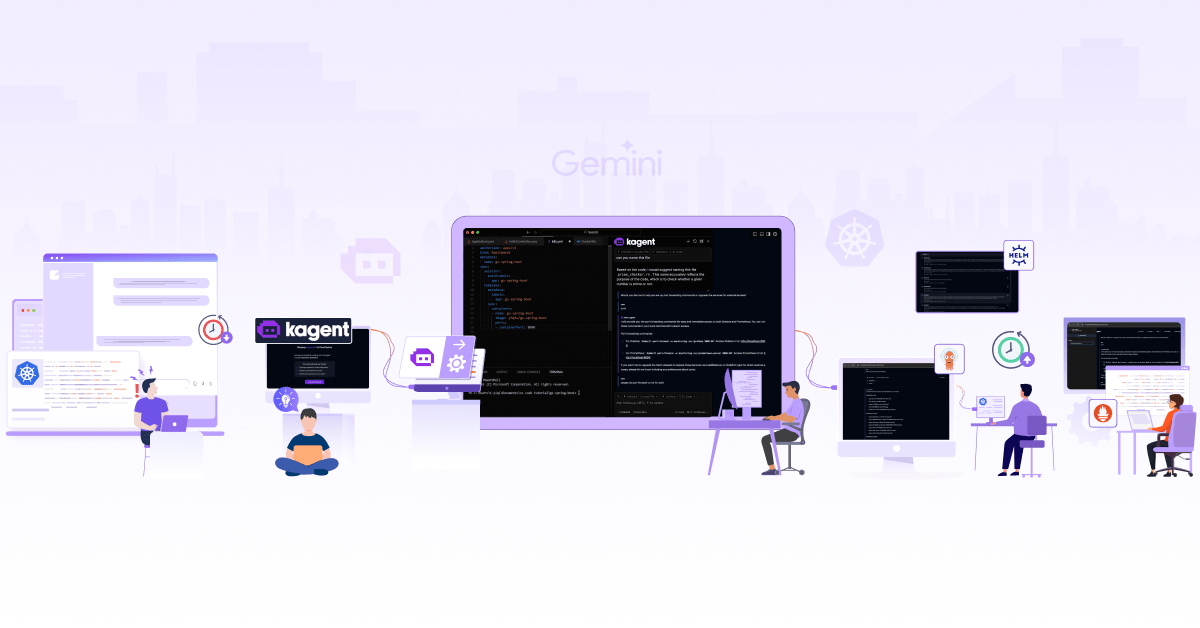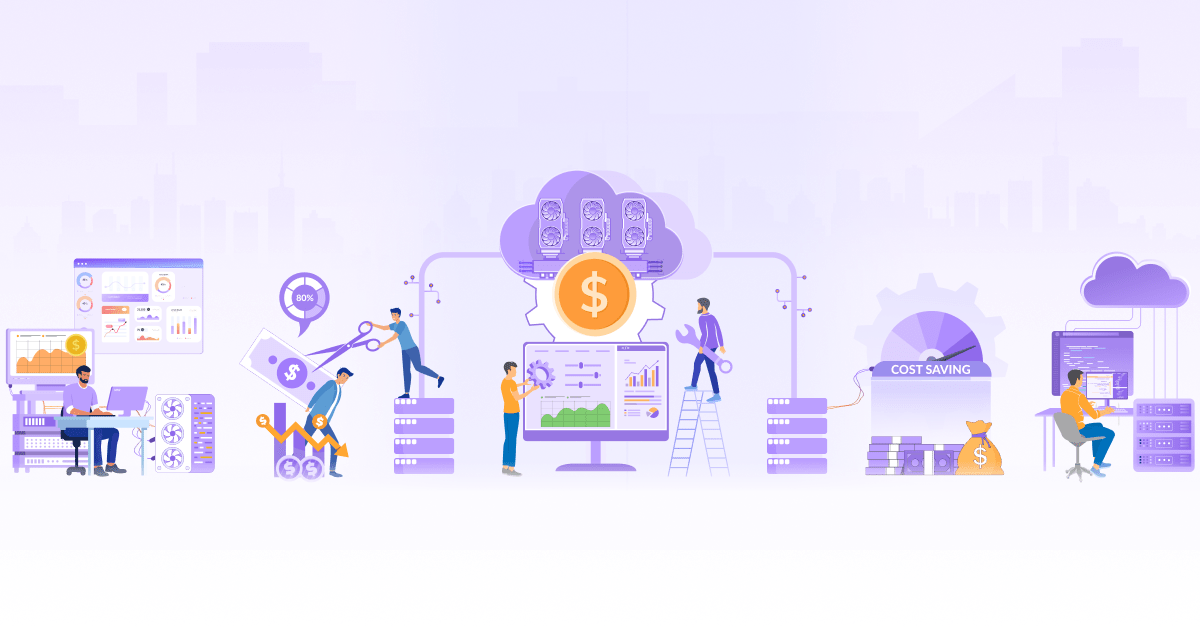
AI Cloud Security Essentials: Protecting Data, Models, and Infrastructure

Organizations are increasingly relying on AI/ML models for essential functions. The convergence of AI with cloud-based infrastructure provides unprecedented opportunities, but also introduces significant risks, including data breaches, model theft, and regulatory compliance violations.
Consider a typical AI deployment journey: Imagine an AI model lifecycle from early data collection and training to deployment and continuous inference. At each step of this lifecycle, sensitive data could be exposed, models can be exfiltrated, and attackers can compromise the pipeline. These incidents can lead to severe consequences like intellectual property theft, privacy violations, or manipulated decision-making. At each stage, security may be threatened in ways that traditional IT security frameworks never anticipated.
In this blog post, we will explore the essential strategies for securing AI cloud environments, covering technical measures from data protection through to operational security. We will also cover the model lifecycle, highlighting the unique threat landscape to implementing robust security controls across the entire ML operations pipeline.
Understanding the AI cloud security landscape
AI cloud ecosystems are specialized subsets of cloud computing, designed to support the development, training, deployment, and monitoring of ML models. These ecosystems consist of several interrelated components:
- Training infrastructure: Compute clusters (GPUs/TPUs) for training models frameworks like PyTorch Distributed and Horovod.
- Model repositories: Secure storage for trained model artifacts and container images (e.g., via MLflow, Hugging Face Hub, or private registries).
- Inference services: Scalable endpoints for real-time or batch predictions, using model serving platforms, such as TensorFlow Serving, Seldon, or KServe.
AI cloud security operates around a shared responsibility model. In this model, the cloud service provider secures the underlying infrastructure, which includes the hardware, software, networking, and facilities that run the cloud services. Conversely, the organizations (tenants) are responsible for the security of the cloud resources they provision, including data security, applications, models, pipelines, artifacts, inference APIs, and application logic.
Understanding the entire model lifecycle is necessary for securing AI systems, with each phase providing unique security risks and requirements:
- Data Ingestion & Preparation: Collecting, cleaning, labeling, and transforming raw data.
- Model Training: Algorithms learn from data in a compute-intensive phase.
- Model Management: Versioning, storing, and managing access to trained models.
- Model Deployment & Inference: Serving predictions via APIs in production.
- Monitoring & Retraining: Tracking performance, detecting drift and abuse, and updating models as data changes.
At each stage, specific AI security challenges emerge, such as poisoned training data, model theft, or API abuse, which are not addressed by traditional application security.
Unique AI security concerns vs. traditional cloud security
AI systems can introduce specific attack surfaces and failure modes that differ from traditional applications:
- Model-specific vulnerabilities: Deployed models can be reverse-engineered or extracted using model-stealing methods, potentially exposing sensitive training data, especially in large language models (LLMs).
- Training data exposure risks: Models may memorize sensitive data during training, which can later leak through inference queries or prompt injection.
- Timeline context: During preprocessing, encrypted data can risk exposure. In training, insecure GPUs allow data theft, and at the deployment stage, public endpoints enable attacks.
Unlike traditional cloud workloads, where threats are primarily focused on application logic, network access, and user authentication, AI systems are vulnerable at the algorithmic, data, and inference levels, demanding a fundamentally new security posture.
Data security in AI environments
Data is the fuel of AI, making it security critical throughout the AI lifecycle, from ingestion to inference. Training data often includes sensitive, proprietary, or regulated information, requiring strong encryption, classification, and governance.
Training data protection
Training data is the foundation for AI models; protecting it is crucial since it affects model accuracy, fairness, and compliance. Organizations should classify data by sensitivity: Public, Internal, Confidential, or Regulated. Classification suggests how data will be stored, accessed, and handled within the AI pipeline.
Sensitive data (e.g., medical records, financial information) must be encrypted both at rest (using AES-256 with customer managed encryption keys) and in transit (via Transport Layer Security (TLS) 1.3 with certificate pinning). For highly sensitive situations, advanced protection approaches such as homomorphic encryption or secure multi-party computation (SMPC) provide additional protection.
Data governance for AI
Data governance enables control over data throughout its AI pipeline journey. It ensures that data is handled ethically and in compliance with regulatory requirements. For effective compliance and incident response, an auditable and traceable data flow is essential. Key mechanisms include: Data lineage tracking and Audit trails.
Lineage tracking captures the origins, versions, and changes of data using tools like AWS Glue or Databricks’ Unity Catalog, or open source frameworks like DataWorld and Amundsen, enabling model traceability in case of data issues. Additionally, transformation tools such as dbt include built-in lineage features for tracking data transformations.
Audit trails monitor data access across training datasets, feature stores, and model checkpoints using services like CloudTrail to detect anomalies. Logs should be immutable, centralized, and integrated with Security Information and Event Management (SIEM) platforms to detect anomalies, enforce policy, and identify insider threats.
Access control and identity management
This is the foundational step in AI security, ensuring that only authorized users and systems can interact with specific resources and data within the ML pipeline.
Role-based access for AI platforms
Role-based Access Control (RBAC) enables access to system or network resources based on the roles assigned to individual users. It is necessary in AI/ML workflows to define and provide permissions based on job functions or roles to strictly separate roles and responsibilities.
Model developers and data scientists must have access to training data, data subsets, and model experimentation tools, limiting access to production. Some roles, like MLOps engineers and operators, manage deployment, monitoring, and infrastructure without access to production inference services or raw training data. End users can only use model inference endpoints (e.g., APIs), preventing access to the model’s core logic or sensitive training data. This approach minimizes fraud, secures data, and meets least-privilege security.
Access to AI model training high-performance compute clusters (GPUs/TPUs) needs to be strictly managed using Just-In-Time (JIT) privilege escalation (e.g., via HashiCorp Vault or Teleport) and multi-factor authentication (MFA) to limit exposure. Moreover, service accounts that run automated training tasks must follow the principle of least privilege, with permissions restricted to only required resources (for example, storage buckets, container registries), preventing lateral movement across the environment in the event of a compromise.
RBAC should be implemented in solutions like Kubernetes, MLflow, Kubeflow, or Airflow and enforced via Identity Access Management (IAM) tools (e.g., AWS IAM and Azure RBAC).
Authentication mechanisms
Authentication verifies the identity of a user or system. It serves as the initial line of protection against illegal access, ensuring that only authorized individuals or systems are permitted access.
MFA should be enforced for all users accessing AI development platforms, cloud consoles, model repositories, and associated critical resources. It adds a second layer of identity verification (e.g., SMS, authenticator apps) on top of a password.
Inference APIs must be protected with strong authentication (e.g., OAuth 2.0, frequently rotated API keys) and authorization controls. Rate limiting and Web Application Firewall (WAF) protection are necessary to defend against brute-force attacks and Distributed Denial of Service (DDoS) attacks on inference services. We can also use JWT tokens, mutual TLS (mTLS), and IP whitelisting to secure model endpoints.
Model security and integrity
AI models represent valuable assets, including proprietary logic and sensitive data. Unlike traditional applications, they are often accessible via APIs, making them vulnerable to theft, tampering, and misuse. Monitoring systems and preventative actions are necessary to ensure the security and integrity of the model.
Model protection strategies
Attackers can attempt to replicate a deployed model by sending queries repeatedly and evaluating the output, a.k.a model extraction or model stealing. Mitigation strategies include:
- Access controls: Model repositories (e.g., Hugging Face Hub, MLflow, internal artifact registries) require strong RBAC policies.
- API rate limiting: Limiting inference requests makes extraction economically impossible.
- Obfuscation/encryption: While difficult to determine, techniques such as model encryption at rest or obfuscation can prevent direct file system access.
- Audit logging: Log and monitor API access patterns for abnormal usage.
Along with the above strategies, other techniques such as watermarking and fingerprinting can be used to trace or prove** **ownership of a deployed or leaked model.
Defending against attacks
AI models face unique threats like model poisoning and adversarial inputs. Unlike traditional applications, models can be compromised through malicious data and crafted inputs.
To counter poisoning attacks, implement:
- Robust data validation: Ensures malicious training samples are removed through sanitization and anomaly detection.
- Adversarial training: Ensures malicious samples during training to build resilience.
Adversarial attacks involve slightly modified inputs that trick models into inaccurate predictions, though they appear normal to a human. Defense strategies for these attacks include:
- Input validation at inference endpoints can block suspicious attack patterns.
- Adversarial detection using input reconstruction and perturbation detection to identify and reject adversarial cases.
- Model robustness evaluation through regular testing of models against known attack patterns.
While securing models is important, improving the underlying infrastructure is also vital. Weaknesses in APIs, storage, or compute environments can weaken even the most secure models.
Infrastructure security
AI workloads are resource-intensive and run on GPU-enabled Kubernetes clusters or cloud-based dedicated TPUs for model training and serving. This makes infrastructure security vital to AI lifecycle security. Any data breach or infrastructure threat can compromise data, models, and downstream predictions.
Securing compute resources
GPUs or TPUs, which often share memory and drivers across workloads, can be exploited for data leakage, side-channel exploits, or privilege escalation if not appropriately isolated. GPU/TPU-specific strategies include:
- Firmware security: Keep GPU/TPU firmware updated to prevent low-level exploits.
- Memory isolation: Use features like NVIDIA MIG to isolate workloads in multi-tenant environments.
- Container runtime security: Use secure runtimes with strict isolation boundaries for GPU access.
Proper tenant isolation at the hypervisor and network level is essential. Robust virtual private cloud boundaries, security groups, and network segmentation can prevent lateral movement across workloads.
Container and orchestration security
Containerization and Kubernetes are central to cloud native AI. Most AI workloads are implemented in containers managed by an orchestration tool such as Kubernetes. These tools must be adequately secured to prevent exploitation and unauthorized access.
ML containers frequently include huge libraries of tools, libraries, and models (e.g., TensorFlow, PyTorch) and system tools, which extend their attack surface. Best practices to harden ML images include:
- Using minimal base images (such as Alpine or scratch) to decrease the attack surface.
- Scanning container images for vulnerabilities (CVEs) regularly using tools such as Trivy or Clair.
- Enforce non-root users and limit privileges whenever possible.
- Implement image signing and verification to maintain integrity and prevent supply chain attacks.
Kubernetes clusters that operate AI services can implement the following security policies:
- Enforce pod security policies and restrict inter-pod communication.
- Use Kubernetes Secrets, Vault, or cloud KMS services to store secrets securely.
- Implement a service mesh (such as Istio or Linkerd) to provide mTLS, traffic encryption, and fine-grained access control between AI microservices.
Beyond infrastructure, the development pipeline must be hardened to ensure model security from build to deployment.
Implementing a secure AI DevOps pipeline
Security must be embedded at every stage of AI development; it cannot be a secondary consideration. AI development typically involves repetitive cycles of data preparation, model training, and deployment, often managed using workflows. A vulnerability introduced at any stage can be difficult to fix or reverse once deployed, without disrupting the entire operation.
Security by design principles
This principle includes integrating security from the beginning of model development rather than patching it when risks arise and are identified, and handling it before models enter the production stage. It includes proactively mapping potential vulnerabilities and weaknesses across the AI lifecycle using techniques such as threat modeling. Threat modeling frameworks such as STRIDE or MITRE ATLAS help identify AI-specific risks, including:
- Poisoned training data
- Model inversion or extraction
- Unauthorized API access
- Inference-based data leakage
Additionally, it is critical to implement security measures in every phase of the ML lifecycle, such as:
- Secure coding guidelines for ML pipelines
- Mandating data anonymization policies
- Secure feature engineering practices
CI/CD security for models
Security testing must be incorporated and automated into model CI/CD pipelines like Jenkins, GitHub Actions, and GitLab CI to ensure that models are periodically tested for vulnerabilities during development and deployment. This can detect issues such as data breaches, adversarial vulnerabilities, or malicious code before the model is placed into production, lowering risk while not slowing down delivery.
Security tests such as static code analysis, data validation, and model evaluation for adversarial robustness or fairness should be included in the process. These tests can be automated using tools such as Bandit and Trivy.
Only models that pass these checks should be deployed using the following strategies:
- Deploying models as immutable artifacts to prevent tampering.
- Rolling out updates gradually to detect issues early.
- Implementing automated rollback mechanisms for compromised models.
Ensuring security in AI is an ongoing process. As AI systems evolve, so do the threats they face, requiring continuous monitoring, testing, and adaptability.
Operational security for AI systems
Operational security (OpSec) for AI systems ensures the secure and reliable performance of models in production. Given the dynamic nature of AI workloads and sensitive data they manage, continuous monitoring and incident response are critical. OpSec involves both proactive monitoring and clearly defined reactive incident response systems.
AI-specific monitoring
When AI models are deployed, they must be continuously monitored in real time for inputs, outputs, and system behavior, rather than being checked only periodically. Look for signals of unusual activity, such as rapid shifts in output distributions, growing biases, or sharp drops in confidence scores. These anomalies may indicate issues like model poisoning, data drift, or adversarial attacks. Tools like Prometheus and Grafana, integrated with ML monitoring solutions, enable real-time visibility. Sudden spikes in inference latency, CPU/GPU utilization without corresponding workload increase, or abnormal API call patterns could also indicate targeted attacks.
Incident response for AI systems
When a security incident impacts an AI model, rapid and tailored response mechanisms are essential for such incidents. Unlike traditional application security, AI models can’t always be patched. Incident response must include rapid rollback, model retirement, or retraining procedures.
Organizations must have systems in place that:
- Clearly identify and automate strategies for reverting to a previous, known-good model version in the event of a compromise.
- Validate backup models before redeployment.
- Maintain versioned, immutable model artifacts (e.g., using MLflow, DVC, or Hugging Face Hub).
If training data has been compromised, remediation involves not only cleansing the data but also tracking and evaluating all affected models. This is where data lineage and audit trails become critical for impact analysis and recovery.
Securing AI agents: The lethal trifecta of risk
As enterprises implement advanced AI solutions and leverage LLM-powered agents (AI agents) in conjunction with cloud resources, a new sort of security threat emerges, specifically when technologies are integrated through frameworks such as the Model Context Protocol (MCP), known as the lethal trifecta.
The lethal trifecta for AI agents
A harmful pattern occurs when an AI agent or MCP-enabled workflow interacts with these three capabilities:
- Access to private data: The agent has the ability to read sensitive information such as internal documents, emails, and code repositories.
- Exposure to untrusted content: The agent consumes data that an attacker could control, such as web pages, emails, or public tickets.
- External communication capability: The agent has the ability to transfer data outside of the company, such as through API calls, outbound emails, or link generation.
When all three of the above capabilities are present, an attacker can mislead an agent into exposing sensitive information, bypassing traditional guardrails and transferring it to an external system. For example, an attacker may post malicious content in a public forum or send an email with hidden instructions that the AI agent could understand and follow in order to leak sensitive information (private data) or read emails (untrusted input) over an enabled outbound channel (external communication).
Mitigating the risk
To prevent this form of attack, avoid combining all three capabilities in a single agent or workflow. Also, guardrails or prompt filtering will not suffice since LLMs can be misled by well-designed, harmful instructions embedded in untrusted data.
Conclusion
As AI grows and transforms businesses across industries, ensuring security throughout the AI lifecycle, from data ingestion to model deployment, becomes increasingly critical. This blog post covered the fundamentals of AI cloud security, such as data protection, access management, model integrity, infrastructure hardening, safe DevOps practices, and operational monitoring.
We began by highlighting the particular threats that AI poses, such as training data leakage, adversarial attacks, and model theft, which traditional security systems are not equipped to manage. We then discussed the various measures required to safeguard AI systems at each level of the pipeline. We also discussed the crucial role of operational security, which involves continual monitoring and incident response planning to guarantee that AI systems behave consistently and recover swiftly from threats in real-time environments.
Finally, securing AI in the cloud is a multifaceted effort that requires collaboration across data scientists, DevOps teams, security experts, and infrastructure providers. Organizations may realize the full potential of AI by using these best practices and building security into the lifecycle from the start.
As AI technology evolves, new security challenges emerge, such as supply chain attacks on ML pipelines, Quantum ML, federated learning risks, and so on, requiring enterprises to be vigilant and adaptable in their security efforts.
If you want to learn more about how to secure your AI systems or need expert advice tailored to your cloud environment, reach out to our AI & GPU Cloud experts. If you found this post valuable and informative, subscribe to our weekly newsletter for more posts like this.
Stay updated with latest in AI and Cloud Native tech
We hate 😖 spam as much as you do! You're in a safe company.
Only delivering solid AI & cloud native content.











